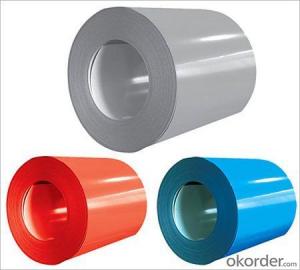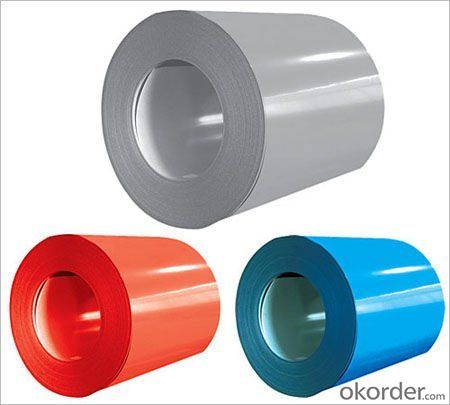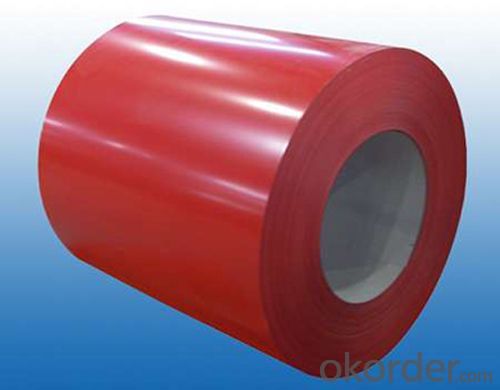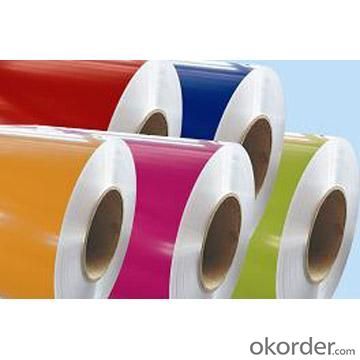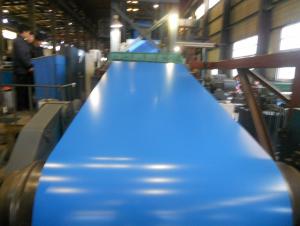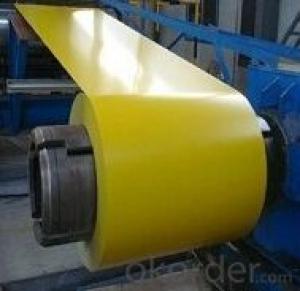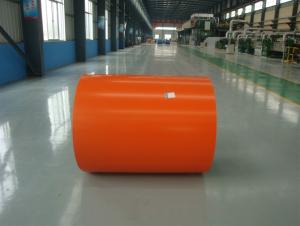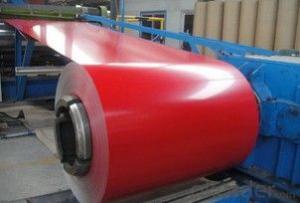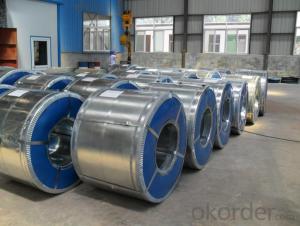Pre-painted steel coi
- Loading Port:
- China Main Port
- Payment Terms:
- TT OR LC
- Min Order Qty:
- -
- Supply Capability:
- -
OKorder Service Pledge
OKorder Financial Service
You Might Also Like
Steel Specification:
Thickness: 0.2-3.0mm
Width: 600-1500mm
Tolerance for thickness,width,flatness and so on conform to the requirements of JIS G3302 or ASTM A653M/924M
Coil ID can be either 508mm or 610mm, maximum coil OD is 2000mm
The speicfication of ASTM Such as A653m,A924 M and so on have been updated to the latest revisions
Zinc Coating Weight Symbol | AZ/Z 06 | AZ/Z 08 | AZ/Z 13 | AZ/Z 12 | AZ/Z 18 | AZ/Z 20 | AZ/Z 22 | AZ/Z 26 | AZ/Z 27 |
Zinc Coating Thickness (mm) | 0.013 | 0.017 | 0.021 | 0.026 | 0.034 | 0.040 | 0.043 | 0.049 | 0.054 |
Weight g/㎡ (both sides) | 90 | 120 | 125 | 183 | 244 | 285 | 305 | 345 | 381 |
ASTM A 525 | G-30 |
| G-40 | G-60 |
| G-90 |
|
| G-115 |
- Q: What is the AISI grade of mild steel that is the most magnetic? What magnetic steels are the cheapest and easiest to buy?
- That is a part of engineering materials, it has a mixture of materials that has a good magnetic properties when they are combined like silicon and manganese etc.
- Q: What are they worth today? As well as a 1943 steel nickel?
- The article I am inclosing quotes the price at 50 cents, apparently the 1943 copper penny is worth thousands of dollars.
- Q: Can steel coils be coated with nickel?
- Yes, steel coils can be coated with nickel.
- Q: What are the common surface treatments for steel coils?
- The common surface treatments for steel coils include galvanization, which involves coating the steel with a layer of zinc to protect against corrosion, as well as painting or powder coating to provide additional protection and enhance aesthetics.
- Q: How are steel coils used in the manufacturing of storage cabinets?
- Steel coils are used in the manufacturing of storage cabinets as they provide the raw material for forming the cabinet's metal components. Coils are unrolled, cut, and shaped into the necessary panels, shelves, and doors, which are then assembled to create the cabinets. The strength and durability of steel make it an ideal material for these cabinets, ensuring they can safely store and organize various items.
- Q: What dangers were there for the steel workers in Pittsburgh under Carnegie?
- All manufacturing jobs of that era were incredibly dangerous, even textile work, but steel work was likely the worst. Men would fall into vats of molten metal, be crushed under huge metal bars, hit by cranes, burned by simple contact with any of the red hot pieces of metal flying all around, and most commonly, die from asphyxiation or lung ailments from the constantly burning fires. Heat stroke was a big killer, too. There was virtually no form of compensation, either for injured workers, or, in the case of death, for their families. The Bessemer method, which Carnegie introduced into the US, was hoped to improve conditions...instead, it merely improved output, and Carnegie's factories after 1900 worked 200,000 men, twelve hours a day, on wages that barely kept their families alive.
- Q: Can steel coils be perforated?
- Yes, steel coils can be perforated. Perforation involves creating a series of holes or small openings in the surface of the steel coil, which can be done for various reasons such as improving ventilation, reducing weight, enhancing aesthetics, or facilitating specific applications.
- Q: How are steel coils used in appliances?
- Steel coils are commonly used in appliances as a key component in the manufacturing of various parts such as heating elements, motors, compressors, and springs. These coils provide durability, strength, and flexibility to ensure the efficient functioning of appliances like refrigerators, washing machines, air conditioners, and stoves.
- Q: I'm kind of confused as to how the difference between a stainless steel and blued steel firearm is sometimes only $20 or so. Isn't stainless steel fairly more expensive to manufacture than plain carbon steel? Are some stainless steel firearms simply stainless steel finished with carbon steel underneath?
- Stainless guns are made out of stainless steel. Now there are also guns that are coated in nickel. Those are made of the usual gun steel. Stainless steel isn't really that much more expensive than normal steel when bought in large quanities.
- Q: I'm going to see Man Of Steel this weekend, and the reviews that I've been hearing aren't that good. I've been hearing that it's this depressing, dark, dramatic film with no humor, loud noises, and action on top of action (which is kind of what I expected from this movie). With that said, I was quite positive that this was what the fans wanted, a more serious Super Man interpretation. I'm ultimately going to judge the movie when I see it, but for now, I have 3 short questions for you:1) What did you think of Man Of Steel?2) Superman Returns got somewhat better reviews than Man Of Steel. Does it seem logical?3) There is a huge fan battle between Man Of Steel and Christopher Reeve's version of Super Man. Which one do you favor?
- I loved the new interpretation in Man of Steel Superman Returns got very poor reviews in the beginning, and as the hatred has worn off and fans have been the only ones voting, the score has moved up. As fond as I am of Christopher Reeves, his version was a touch campy. I much prefer the serious treatment.
Send your message to us
Pre-painted steel coi
- Loading Port:
- China Main Port
- Payment Terms:
- TT OR LC
- Min Order Qty:
- -
- Supply Capability:
- -
OKorder Service Pledge
OKorder Financial Service
Similar products
Hot products
Hot Searches
Related keywords
